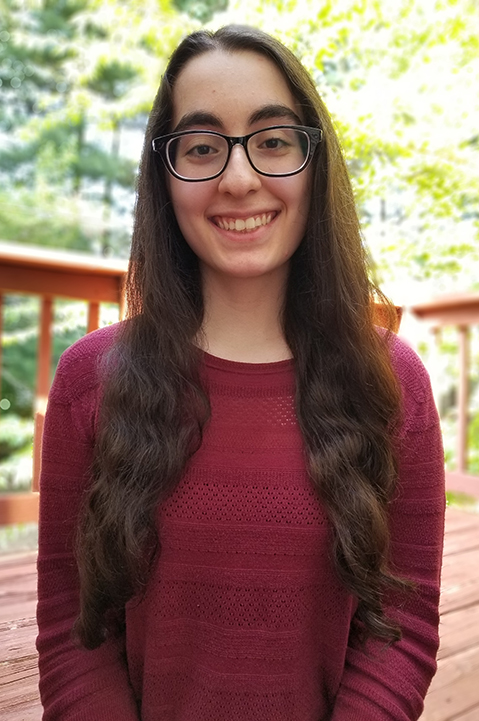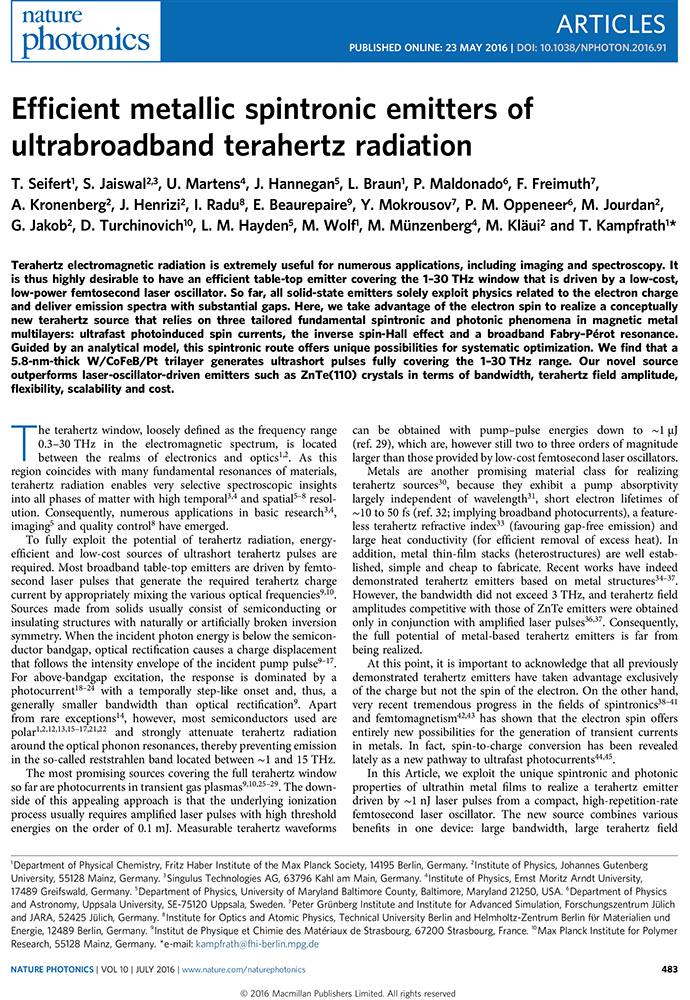An example of research created by our Physics Cohort:
“Using Quasi-Phase Matching for Enhanced Terahertz Generation”
Timothy S. Pillsbury
Professor L. Michael Hayden
The goal of this project was to use a quasi-phase matching method to enhance the efficiency of difference frequency generation (DFG) to create terahertz (THz) frequency radiation in a layered nonlinear optical system. THz light has many applications from communications to medical and security imaging. Research has shown that applying femtosecond pulses of infrared light to poled nonlinear optical polymers creates THz light through DFG. It was found that as more layers of polymer were added, the THz generation increased. However, when the polymer becomes too thick, destructive interference of newly generated light with previously generated light causes a reduction of the total generated THz light. Theory suggests that by layering an inactive phase-matching layer between active layers of nonlinear polymers, this destructive interference can be diminished, and more efficient THz generation is possible. This project focused on providing experimental evidence to support the theoretical work. A system was created using layers of the nonlinear polymer DAPC in sequence with layers of fused silica. We observed an increase in the amount of THz light generated in this quasi-phase matched system as compared to the bulk DAPC system. Refinements to the theory were made based on comparison with the experimental data.
This work was funded, in part by the National Institute of Science and Technology (NIST), an Undergraduate Research Award from the UMBC Office of Undergraduate Education, and the UMBC Department of Physics.

Meet a current research student:
Meet a research alumnae:
- Alex Eftimiades
- John Hannegan
- Adursh Iyer
- David Fialkow
- Rachel Morin
- Arman Setser
- Sigfredo Soto
- Michael Wolfe
Benefits for Physics students:
- Work with a faculty member
- Reinforce classroom learning
- Prepare for work or graduate school
- Travel to national conferences
- Receive grant funding
- Published work
- Michael Wolfe, Physics undergraduate co-authors American Physical Society article: “Robust operating point for capacitively coupled singlet-triplet qubits“
- John Hannegan, Physics undergraduate co-authors Nature Photonics article: “Efficient metallic spintronic emitters of ultrabroadband terahertz radiation“
- Publish independent research
- Production of Tapered Optical Fibers
Lidiya A. Mishchenko. UMBC Review Vol.9. - The Quantum Interference Effects with Multi Mode Fibers
Stephanie Ferrone. UMBC Review Vol.11. - Microstructure and elution of tetracycline from block copolymer coatings
David A. Sweigart, et al. Journal of Pharmaceutical Sciences Vol. 99, Issue 6, pages 2777–2

So, what are you doing next summer?
- Smithsonian National Air and Space Museum
- University of Michigan – CERN
- SRI International
- NIST – SURF
- NASA – Office of Education
- RISE – Research Internships in Science and Engineering
- National Science Foundation
- Maryland Sea Grants
- Pathways to Science
- UMBC Summer Research Opportunities
- University of Washington- AccessSTEM
- Summer Research Opportunities Spreadsheet

Learn how to find research internships and job opportunities using Handshake!![]()
For more information, check out this department’s website:
Physics